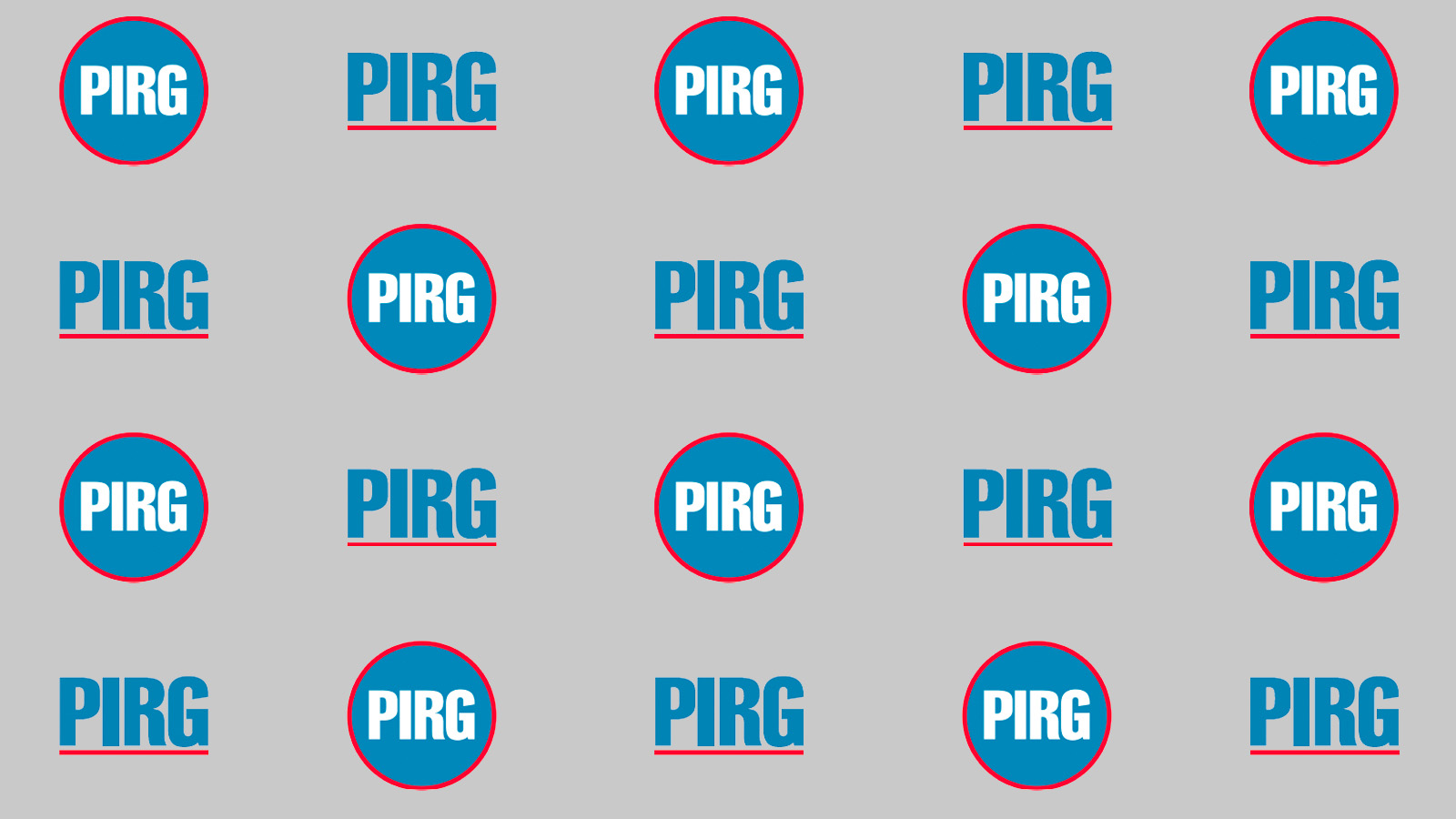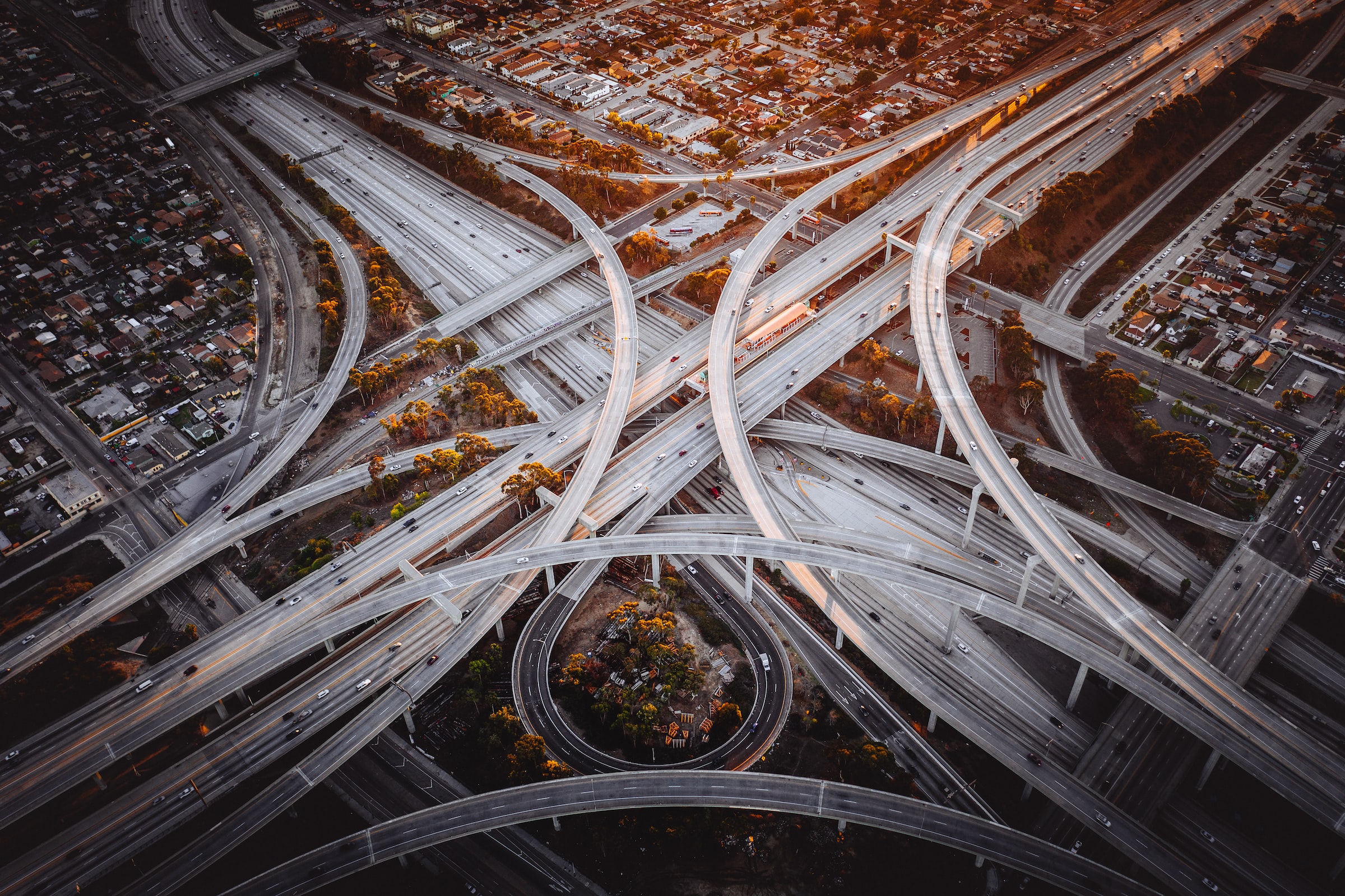
Highway Boondoggles
Wasted Money and America’s Transportation Future
Even though the Driving Boom is now over, state and federal governments continue to pour vast sums of money into the construction of new highways and expansion of old ones – at the expense of urgent needs such as road and bridge repairs, improvements in public transportation and other transportation priorities. Eleven proposed highway projects across the country – slated to cost at least $13 billion – exemplify the need for a fresh approach to transportation spending.
Downloads
Americans drive no more in total now than we did in 2005, and no more on average than we did at the end of Bill Clinton’s first term as president. The recent stagnation in driving comes on the heels of a six decade-long Driving Boom that saw steady, rapid increases in driving and congestion across the United States, along with the investment of more than $1 trillion of public money in highways.
But even though the Driving Boom is now over, state and federal governments continue to pour vast sums of money into the construction of new highways and expansion of old ones – at the expense of urgent needs such as road and bridge repairs, improvements in public transportation and other transportation priorities.
Eleven proposed highway projects across the country – slated to cost at least $13 billion – exemplify the need for a fresh approach to transportation spending. These projects, some of them originally proposed decades ago, either address problems that do not exist, or have serious negative impacts on surrounding communities that undercut their value. They are but a sampling of many questionable highway projects across the country that could cost taxpayers tens of billions more dollars to build, and many more billions over the course of upcoming decades to maintain.
With the federal Highway Trust Fund on life support, states struggling to meet basic infrastructure maintenance needs, and growing demands for investment in public transportation and other non-driving forms of transportation, America does not have the luxury of wasting tens of billions of dollars on new highways of questionable value. State and federal decision-makers should reevaluate the need for the projects profiled in this report and others that no longer make sense in an era of changing transportation priorities.
America’s driving habits are changing, and those changes are likely to last.
Figure ES-1. Vehicle-Miles Traveled in the United States, 1946-2013
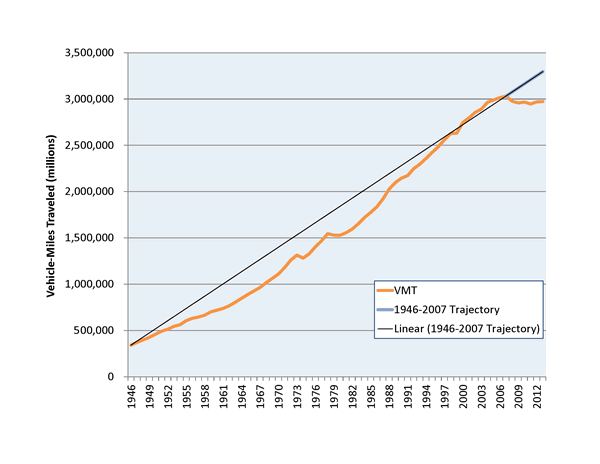
Figure ES-2. Vehicle-Miles Traveled per Capita in the United States, 1946-2013
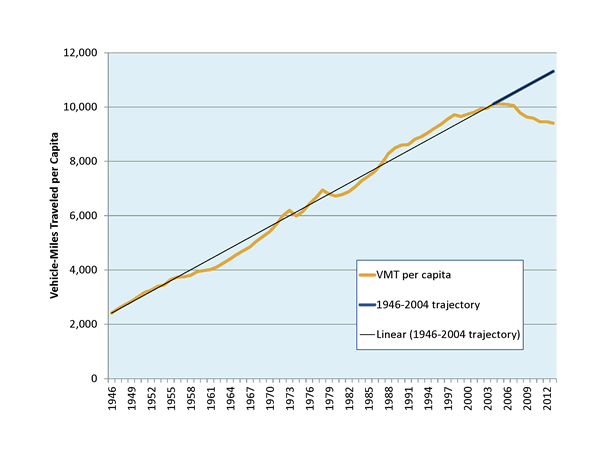
The total number of miles Americans drive is lower than it was in 2005, while per-capita driving has fallen by 7 percent in the last nine years. (See Figures ES-1 and ES-2.) If old Driving Boom trends had continued, Americans would currently drive an average of about 11,300 miles annually instead of the current average which has fallen to just below 9,400. In fact, as Figure ES-1 shows, Americans are driving a total of about three hundred billion fewer annual miles today than if Driving Boom trends had continued. While the economic recession contributed to the fall in driving, the shift predates the recession by several years and many of the forces contributing to the fall in driving are likely to be lasting.
- The number of cars and licensed drivers per household both peaked during the 2000s and have subsequently declined. The workforce participation rate, which also increased during the Driving Boom years, has been falling and is expected to fall farther as the Baby Boomers age.
- Gasoline prices have been high for much of the last decade and government forecasters anticipate that they are unlikely to fall significantly in the foreseeable future.
- The long-term trend toward suburbanization has stopped. In the early 2010s, central cities grew faster than their suburbs for the first time in 90 years.
- The use of non-driving modes of transportation – transit, bicycling and walking – is on the rise. In addition, recent years have seen the emergence of new forms of mobility such as carsharing, bikesharing and ridesharing whose influence is just beginning to be felt.
- Transportation behaviors have been changing fastest among members of the Millennial generation. Americans aged 16 to 34 drove 23 percent fewer miles on average in 2009 than they did in 2001. Millennials are not only the largest generation in the United States, but they will be the primary users of transportation infrastructure we build today.
Despite the end of the Driving Boom, the United States continues to spend tens of billions of dollars each year on highway expansion.
- U.S. federal, state and local governments spent roughly as much money on highway expansion projects in 2010 as they did a decade earlier, despite a dramatic change in anticipated future growth in driving. In 1999, the federal government anticipated that Americans would be driving 3.7 trillion miles per year by 2013 – 26 percent more miles than we actually did.
- States continued to spend $20.4 billion a year constructing new roads or expanding the capacity of existing roads between 2009 and 2011, according to Smart Growth America and Taxpayers for Common Sense. During that same period, states spent just $16.5 billion repairing and preserving existing roads, even as those roads’ surface conditions worsened.
- If the states had spent their road expansion money on repairs instead, they could have halved the portion of road surfaces in poor condition by 2011. If that practice had continued, no state-owned roads would have surfaces in poor condition by the end of 2014.
States continue to spend tens of billions of dollars on new or expanded highways that are often not justified in terms of their benefits to the transportation system, or pose serious harm to surrounding communities. In some cases, officials are proposing to tack expensive highway expansions onto necessary repair and reconstruction projects, while other projects represent entirely new construction. Many of these projects began years or decades ago and have continued moving forward with no newer evaluation of whether their existence is justified. Questionable projects poised to absorb billions of scarce transportation dollars include:
- Seattle’s Alaskan Way Viaduct, Washington, $3.1 billion to $4.1 billion – A cheaper transit-based alternative to an expensive highway tunnel has already been put in place as a stopgap during the much-delayed tunneling project. The stopgap’s successes could be built upon in order to achieve nearly all the same goals as the tunnel project for far less money.
- Tesoro Extension to Toll Road 241, California, $200 million – A proposed extension of a toll road already in danger of default because of lower-than-projected traffic.
- Interstate 11, Arizona and Nevada, $2.5 billion – A long-distance Interstate highway would be built in a corridor already well served by a non-Interstate highway that is not projected to become congested in the foreseeable future.
- Dallas Trinity Parkway, Texas, $1.5 billion – A nine-mile urban highway through the heart of Dallas would have a minimal impact on congestion while detracting from popular, ongoing efforts to make downtown Dallas an attractive place to live and work.
- Tolled Express Lanes on Route 470, Colorado, $153 million – The state’s own analysis assumes that the project won’t deliver net benefits until at least the early 2030s.
- Double-decking I-94 in Milwaukee, Wisconsin, $800 million – Insisting on a wider road despite its own data showing feared traffic increases are not materializing, the Wisconsin Department of Transportation wants to rebuild an existing highway as an eight-lane double-decker route through a narrow channel between three cemeteries, despite objections from local officials and citizen groups.
- Widening I-94 through Detroit, Michigan, $2.7 billion – Motor City area residents say they would rather live with current traffic congestion than pay for road widening projects. Nevertheless, state highway planners want to expand a highway through Detroit, further disconnecting two rebounding neighborhoods and demolishing 11 pedestrian-usable bridges.
- Illiana Expressway, Illinois and Indiana, $1.3 billion to $2.8 billion – A new privatized toll road proposed primarily to speed freight trucks across the Midwest may instead charge tolls too high to attract trucks, and will likely require hundreds of millions of dollars in taxpayer subsidies.
- Cleveland Opportunity Corridor, Ohio, $331 million – A $100-million-a-mile road has been proposed for a community where driving has been stagnant for years, and where residents are calling instead for repairs to existing roads and investment in transit improvements.
- Effingham Parkway, Georgia, $49 million to $100 million – A new road north and west of Savannah is intended to relieve the traffic burden from an existing state highway, where traffic is not keeping up with projections.
- I-26 Connector, North Carolina, $400 million to $600 million – A large part of this massive project includes widening a highway that does not have enough use to justify the expansion, in the process destroying homes and businesses in a mature livable neighborhood.
The diversion of funds to these questionable projects is especially harmful given that there is an enormous need for investment in repairs to existing roads, as well as transit improvements and investments in bicycling and pedestrian infrastructure, even as the federal Highway Trust Fund runs on empty. Federal and state governments should eliminate or downsize unnecessary or low-priority highway projects to free up resources for true transportation priorities.
Specifically, policy-makers should:
- Reconsider all plans for new and expanded highways in light of new transportation trends and recent changes in traffic volumes. This includes projects proposed to be completed via public-private partnerships.
- Reorient transportation funding away from highway expansion and toward repair of existing roads and investment in other transportation options.
- Encourage transportation investments that can reduce the need for costly and disruptive highway expansion projects. Investments in public transportation, changes in land-use policy, road pricing measures, and technological measures that help drivers avoid peak-time traffic, for instance, can often reduce congestion more cheaply and effectively than highway expansion.
- Reevaluate transportation forecasting models to ensure that they reflect changing preferences for housing and transportation among Millennials and others, and incorporate the availability of new transportation options such as carsharing, bikesharing and ridesharing.
- Invest in research and data collection to more effectively track and react to ongoing shifts in how people travel.
Topics
Find Out More

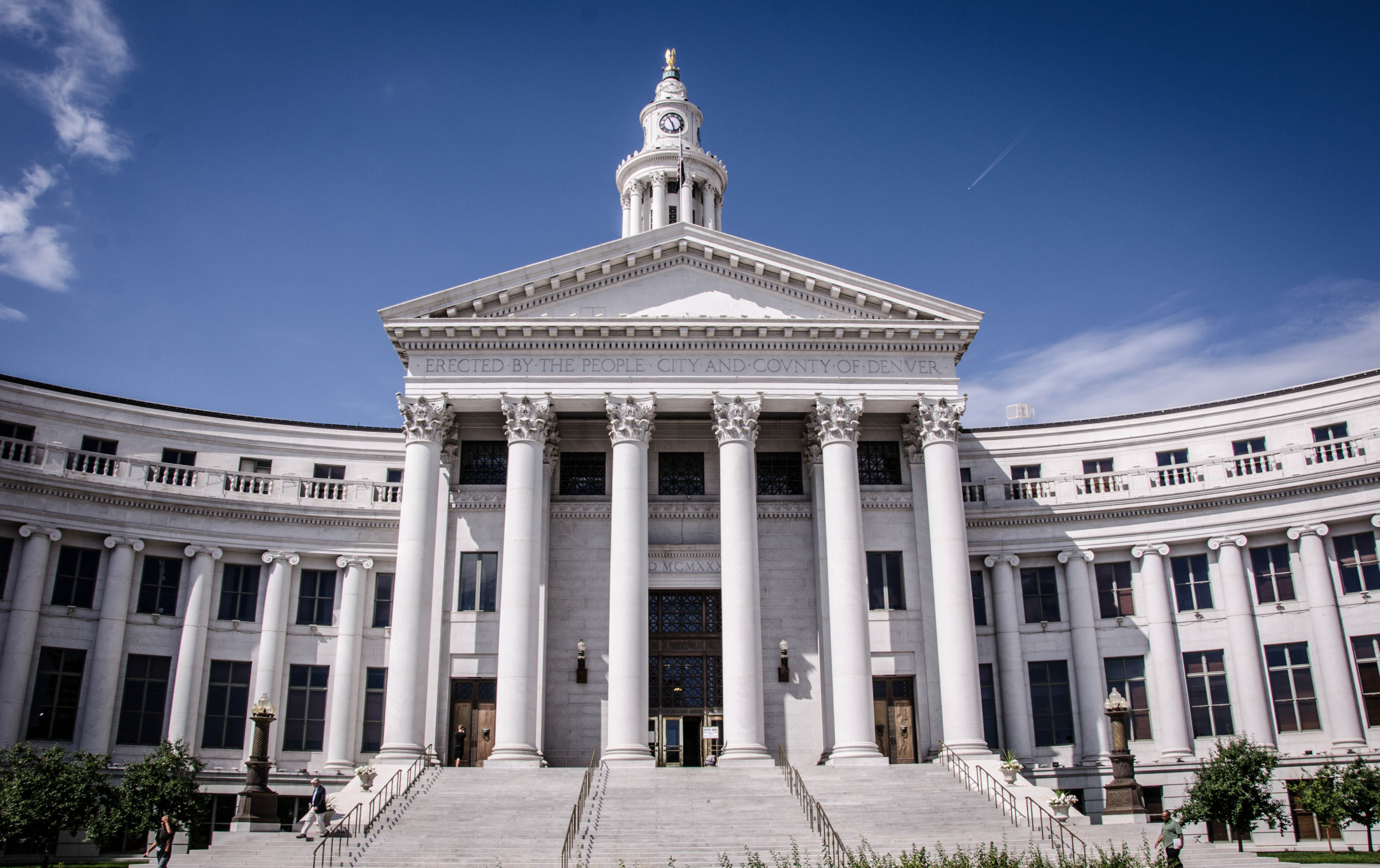
A Greener, Healthier Denver
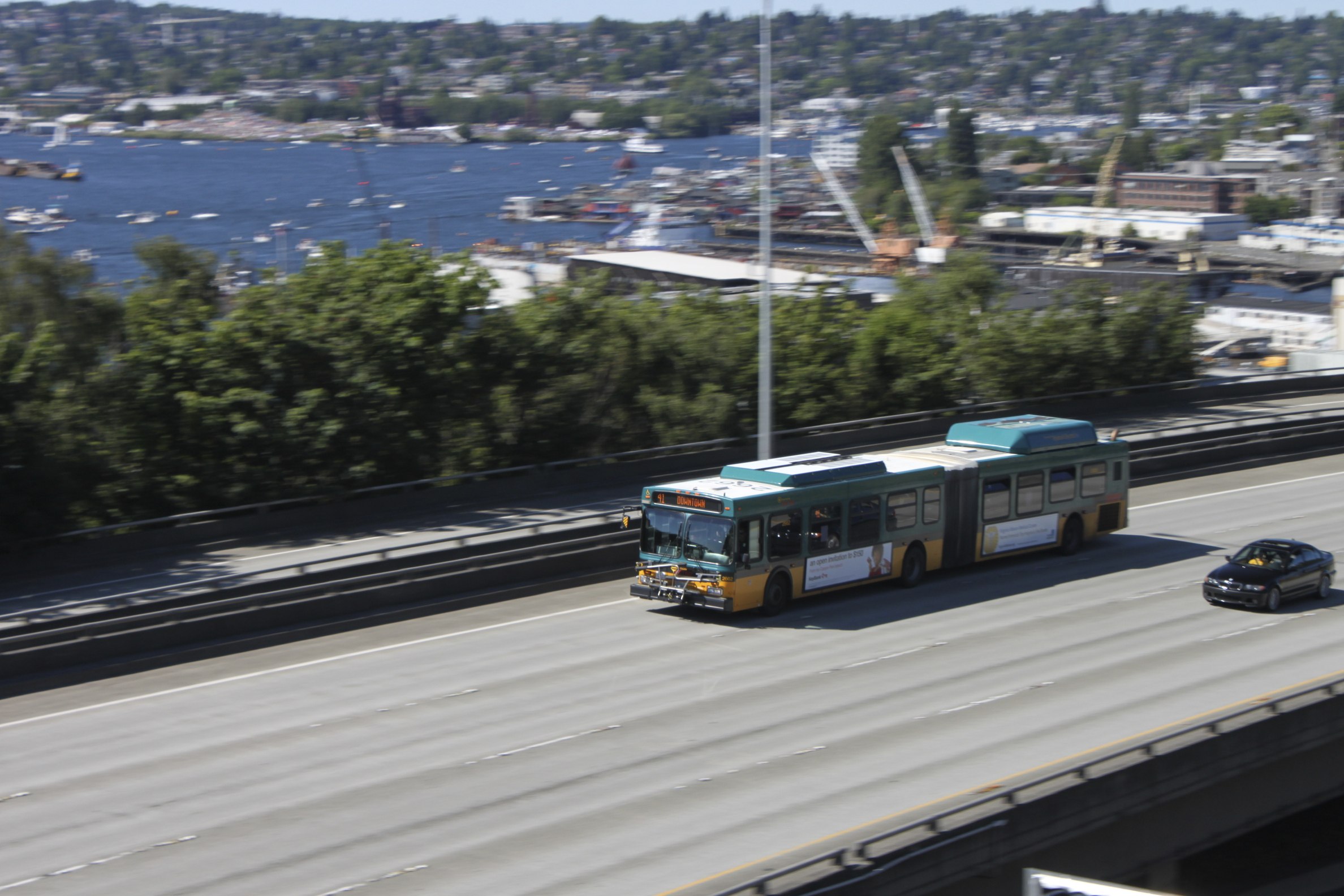
Less driving is possible
